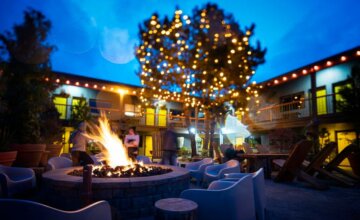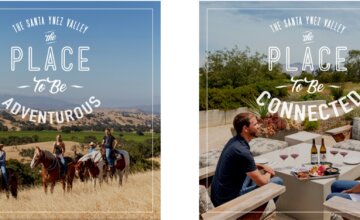DMO Insights – June 8
- Jun 08, 2020
- By Justin Yax
- In DESTINATION, DMO INSIGHTS
What a week it has been. As a nation, we now find ourselves in the throes of two prominent crises. The COVID-19 pandemic, of course, has been with us for almost six months now. And the social injustice, systemic racism, and police brutality crisis that has been with us for much, much longer but now seems to be gaining the traction it deserves.
In this edition:
- More COVID-19 cases do not equal panic…yet
- The ethics of traveling during recovery
- Un-Phased – aligning recovery phases/stages and what they mean
- Latest Destination Analysts Coronavirus Travel Sentiment Index Report findings
- What does (or should) travel marketing look like during recovery?
- Recent news, useful links & upcoming webinars
MORE COVID-19 CASES DO NOT EQUAL PANIC…YET
As the number of new daily COVID-19 cases inches up in many states and counties, or ebbs and flows in others, there is the fear of regression and a return to increased restrictions on travel and day-to-day life. While that’s not entirely out of the question, it’s not likely either – at least not for the time being.
Florida recorded more than 1,000 new COVID-19 cases per day for five consecutive days last week, including a record 1,419 on June 4. Yesterday, Oregon broke its single-day record for new positive cases with 146. By contrast, on June 6 New York saw its number of new positive cases dip below 1,000 for only the second time since March 16.
But the increase in positive COVID-19 cases, while an indicator that the virus will continue to live and spread among us for the foreseeable future, is by no means a sign that things are getting worse. It is, however, due to a number of factors that would naturally produce a greater number of positive results, including:
- Increased testing capabilities & capacity
- Thorough contact tracing
- Isolated outbreaks at individual businesses
- And yes, relaxed personal/social vigilance as restrictions ease
In the wake of continuing social justice demonstrations, the Washington Post declared this weekend that “Social Distancing is Over” and that society is now basically running “a natural experiment that scientists could never have ethically undertaken.” Will we see an increase in the number of cases due to little or no social distancing precautions being taken during these demonstrations? Or will we learn, as has been the case so far with the infamous Lake of the Ozarks pool parties over Memorial Day Weekend, that we can gather en masse as a society without fear of a communal spread? Only time will tell, but for the time being, increased cases do not mean it is time to sound the alarm.
THE ETHICS OF TRAVELING DURING RECOVERY
Last week, National Geographic published a thought-provoking story titled “With trails opening, is it safe – or ethical – to go hiking this summer?” that explores the struggle many destinations – and many travelers – face in this regard.
Which begs the question of whether it is safe – or even ethical – for Americans to travel this summer and risk contracting or potentially exposing others to the virus in the process. The answer is not as black and white as we think it is, and it’s probably a little bit of both depending on who you ask.
This question has been repeatedly raised with regard to the public traveling during COVID-19 recovery, and also as it pertains to marketing and promoting travel. For many destinations, it is a complex issue that is part science, part cost-benefit analysis, part economic survival, and partly the exercise of free will.
While I can’t speak for everyone, if someone chooses to go hiking or to travel right now, and if county, state, or federal health officials tell us it is safe and acceptable to do so, it does not mean the traveler lacks morals or ethics.
Ultimately, the decision is left up to the individual who is traveling, and the destination they plan to visit, to determine what is safe, acceptable, and even ethical. But what it doesn’t excuse anyone from is their obligation to visit, recreate, and otherwise travel responsibly, from respecting local rules and restrictions to protecting the safety of themselves and those around them.
This issue is partly the responsibility of the health authorities to establish policies and protocols, partly the responsibility of the destinations to communicate critical information and set shared expectations of both the traveler and the DMO, and largely the responsibility of the visitor to ensure they are aware of local regulations, accepted best practices, and the environment surrounding them.
UN-PHASED – ALIGNING RECOVERY PHASES/STAGES AND WHAT THEY MEAN
Is it just me, or does anybody else wish that states could align their recovery phases so that Phase 2 means the same thing in California that it does in Washington? Except that California refers to their “phases” as Stages, which further compounds the confusion. Much like my personal frustration with the Metric vs. Imperial weights & measures systems (can’t we all just pick one system and stick with it?), I wish states could have come together early on to define the recovery phases or stages together and develop a consistent set of criteria, measurements, and plans for each phase.
But that train left the station long ago, so we’re left to read between the lines of each state and each phase or stage, to determine what it means for each state and when. With DMO clients spread across four Western states, it can sometimes be difficult to stay on top of which state (or individual county) is in which phase (or stage).
Generally speaking, the phased recovery approach follows the same five stages. And while there may only be three or four Phases in any given state, these are the broad stages contained within them:
- Isolation and stay-at-home orders: which were first implemented in early/mid-March
- Initial/limited reopening: allowing for additional essential services, outdoor recreation, etc.
- Expanded reopening: further easing of restrictions to allow for more freedom of movement
- Broad reopening: to allow for large gatherings, unrestricted travel, return to business, etc.
- All clear: or as close thereto as we will get as a society moving forward
With some exceptions, most states are currently in or close to being in the third step of this model – Expanded Reopening. And while many of us are hoping for an “all clear” sooner rather than later, using China’s recovery as a benchmark we can anticipate that the Expanded Reopening phase will be with us for a while – perhaps even through the summer – before broad reopening follows.
DESTINATION ANALYSTS CORONAVIRUS TRAVEL SENTIMENT INDEX REPORT – JUNE 8
There’s no question that as travel restrictions loosen across the country, many Americans are eager to set out and explore. As American travelers’ feelings about their health, financial, and travel safety continue to improve, more Americans report that they are already traveling or ready to travel according to this week’s Destination Analysts’ Coronavirus Travel Sentiment Index Report. Among respondents, 70 percent will take at least one leisure trip in the remainder of 2020, and 40 percent say their next road trip will take place this summer. You can download the full findings presentation deck HERE.
On the road again: According to the survey respondents, 53% of American travelers are either ready to travel or are already traveling, an increase of 3% over last week, and further indication of the momentum that is building around the return of leisure travel activity.
Summer travel plans: More than three quarters (76.4%) of American travelers have a “very well developed” or “somewhat developed” sense of where and when their next leisure trip will take place, we know that much of that travel is scheduled to take place over the June-August timeframe. And while demand for commercial air travel appears to remain relatively flat through the first quarter of 2021 as expected, 40% of American travelers have plans to take a road trip between now and the end of August.
Further recovery into fall: Perhaps the biggest early indicator of a rebound or recovery is the current intention of travelers to take a trip in the fall. While those plans could accelerate or slow between now and then, 61.8% of American travelers say they have at least tentative plans to travel during September, October, or November. This represents a 5.2% increase over last week, and a 14.1% increase over two weeks ago.
WHAT DOES (OR SHOULD) TRAVEL MARKETING LOOK LIKE DURING RECOVERY?
Navigating the various phases/stages of recovery can be confusing (see related story above) to DMOs and travelers alike. So what should your marketing and messaging look and sound like during recovery? Here’s a quick primer, which we are always happy to discuss further as your interest allows:
Objective
As with all communication, creative and messaging should be developed and deployed with the following goals in mind:
- Inspire visitors to plan and prepare
- Increase safety & compliance
- Set shared expectations
- Increase trust between businesses, visitors, residents, and government
Tone
Messaging tone should be direct, and consistent with past style, tone, and sentiment. While specific messages are different for every destination, as a rule, the tone of recovery messaging should be:
ALWAYS NEVER
Confident Apologetic
Reassuring Ignorant
Calming Inciting
Humble Arrogant
Welcoming Hesitant
Sincere Disingenuous
Want Need
Eager Desperate
Unwavering Wishy washy
Respectful Dismissive
Tactics
Phase 2 recovery tactics should focus on digital/electronic channels, with updated messaging and content to address common visitor concerns, behaviors, and interests as travel resumes.
Boosted Organic
Boosting organic social media posts increases the reach of organic social content, and provides opportunities for retargeting with additional information and a specific call to action.
Paid Digital
A mix of upper-funnel awareness display ads, mainly across Facebook, Instagram, and Facebook Audience Network, supported with retargeting ads to reach lower funnel audiences with a more specific call to action. Implemented over three phases as follows:
Step I: Local and short drive in-state
Step 2: Incorporate legacy and broader drive markets
Step 3: Begin more regular marketing with regard to markets and messaging
Paid Search
Continue existing paid search efforts while broadening keywords to include popular current search terms related to safety and travel, such as “safest vacation destinations,” “travel destinations coronavirus,” “[YOUR DESTINATION] coronavirus,” and others. Revise/update search ad copy to quickly communicate key messages of safety, etc.
Website
Develop specific landing page or pages tied to recovery campaign, incorporate creative and messaging to create a seamless customer journey. Update homepage, visitor updates, and other appropriate pages of the website (ongoing) to reflect the current status of visitor services in the destination, including but not limited to the following key content:
- What’s open and what’s closed
- Rules, regulations, and restrictions
- Tips & recommendations
- Visiting responsibly
- Visitor resources
Consumer email
In addition to the destination’s standard cadence for direct-to-consumer email marketing, develop a standalone email/newsletter to be distributed upon your entry into your reopening phase. Similar to the website, incorporate travel inspiration and provide planning resources as appropriate.
Our clients have likely heard some or all of this before, but it’s a good reminder that messaging, tone, and tactics can and do shift, and need to be revisited periodically or sooner as circumstances warrant.
USEFUL NEWS, LINKS, WEBINARS & MORE
Recent News
“Tourist towns balance fear, survival in make-or-break summer” – AP News – June 3
“Social Distancing is Over” – Washington Post – June 5
“With trails opening, is it safe – or ethical – to go hiking this summer?” – National Geographic – June 5
“Global vacation rental bookings skyrocket after surge in domestic tourism” – AirDNA – June 5
“Vrbo exec says travelers have new ‘confidence’” – USA Today – June 5
Useful Links
Update on American Travel in the Period of Coronavirus – Destination Analysts – June 8
AirDNA Covid-19 Data Center – AirDNA – ongoing
Weekly COVID-19 Travel Data Report – U.S. Travel – June 4
Guidance for promoting the health & safety of all travelers – U.S. Travel
Upcoming Webinars
Coronavirus Travel Sentiment Survey Findings – Week 13 – Destination Analysts – June 9, 8 a.m. PDT
Best Practices for Communicating Health & Safety Guidance – U.S. Travel – RECORDING
Delayed Recovery Curve: Getting Back on Track – Knowland Group – June 9, 11 a.m. PDT
On Track Recovery Curve: Getting Back to Growth – Knowland Group – June 10, 11 a.m. PDT
Leading Recovery Curve: Getting Your Groove Back & Keeping It – Knowland Group – June 11, 11 a.m. PDT



